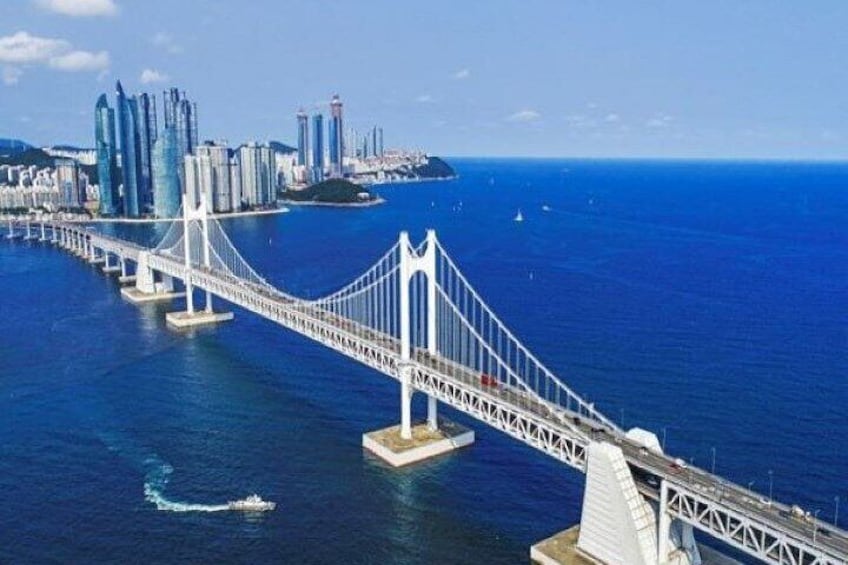
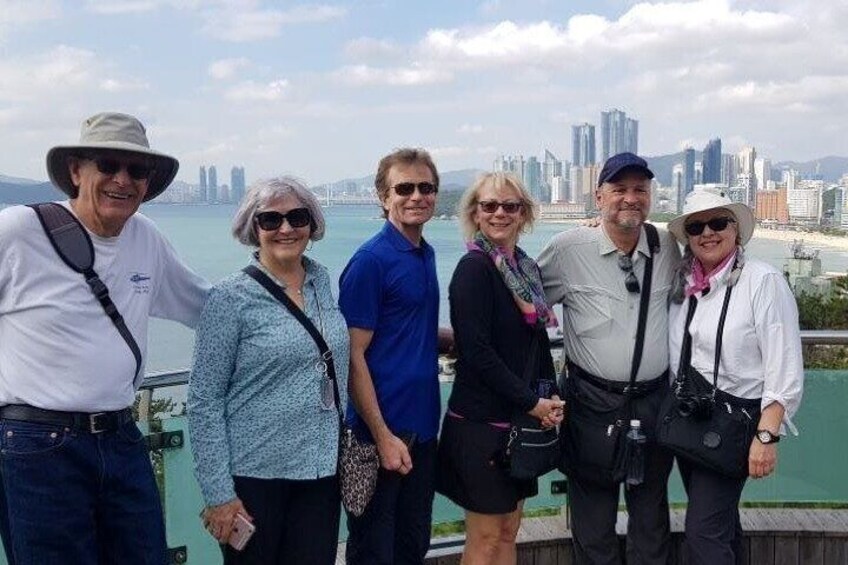
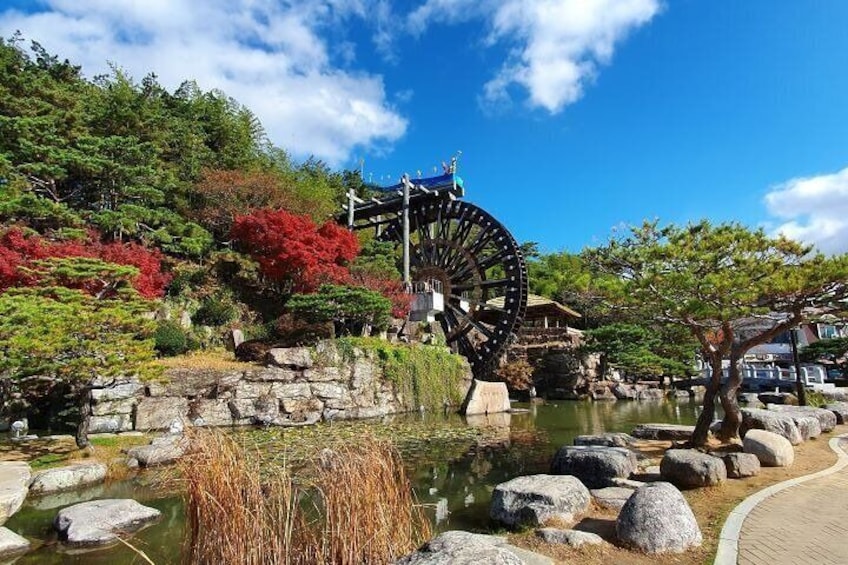
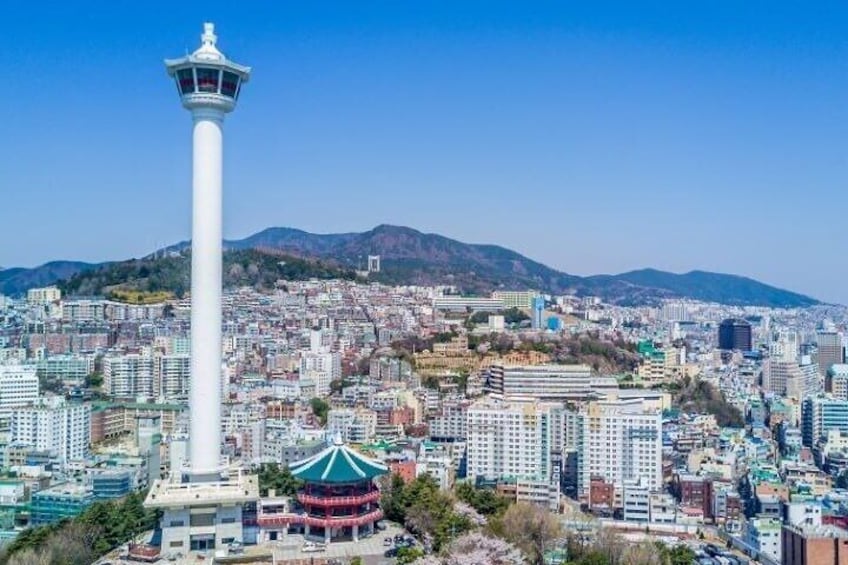
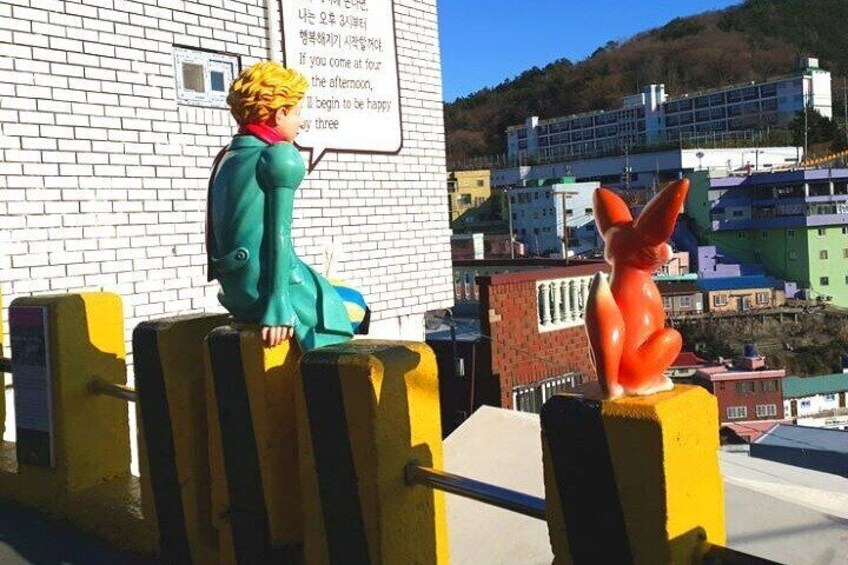
2-Day Customised Tour: Busan and Gyeongju Highlights
Features
- Free cancellation available
- 2d
- Mobile voucher
- Instant confirmation
- Selective hotel pickup
- Multiple languages
Overview
Busan and Gyeongju are diverse and attractive cities that are closely intertwined with culture and history. Busan “Haeundae” a famous tourist area known to all Koreans today was named after the ancient Shilla philosopher 'Choi Chi-won' (pen named 'Haeun', 'Goun', 'Haebu'), who fell in love with the beauty of the Haeundae area. and also, Woman King Jinseong, the 51st kingdom of Silla, was famous for frequently visiting Busan “Haeundae” Hot Springs to treat her skin diseases.
You can enjoy abundant fresh seafood's in Jagalchi, Busan, learn about modern history at Gukje Market and Gamcheon Culture Village, leave unforgettable memories at Haeundae, a beautiful sea of romance, and also enjoy the Korean sentiment where the past and the present coexist through Busan and Gyeongju, which are feeling the Korean life, cultural, tradition, history, natural landscapes for your 2 days of the trip.
Activity location
- Haedong Yonggungsa Temple, Busan
- 86 Yonggung-gil
- Yonggung-gil, Busan, South Korea
Meeting/Redemption Point
- Haedong Yonggungsa Temple, Busan
- 86 Yonggung-gil
- Yonggung-gil, Busan, South Korea
Check availability
Korean driver without Guide in Multilingual
- 2d
- Opening hours: Sat 8:30am-10:00am
- English
Saloon, Mini Van, Mini Bus: Small, Large Group with Korean driver ( Simple English )
Pickup included
With Guide (1-7pax) in Multilingual
- 2d
- Opening hours: Sat 9:00am-11:30am
- English
Saloon, Mini Van: Small-private Group with a Guide or driving guide
Pickup included
With Guide (8-15pax) in Multilingual
- 2d
- Opening hours: Sat 9:00am-11:30am
- English
Large Van, Mini Bus: Large-private Group with a Guide or driving guide
Pickup included
What's included, what's not
- Private transport
- Busan, Gyeongju free transport service after the tour
- Free pickup and drop-off
- Guide + driver or driving guide
- Gas + toll + parking fees
- Meals + Admission fees are not included ( pay at the spot )
- Seokguram Grotto W 5,000/per Bulguksa Temple W 5,000/per
- Daereungwon Tomb Complex W 3,000/per Donggung Palace And Wolji Pond W 3,000/per
Know before you book
- Wheelchair accessible
- Infants and small children can ride in a pram or stroller
- Public transport options are available nearby
- Transport options are wheelchair accessible
- Suitable for all physical fitness levels
- Please advise any specific dietary requirements
- At the time of booking Minimum, 2 people numbers apply. There is a possibility of cancellation after confirmation if there are not enough passengers to meet the requirements. In the event of this occurring, you will be offered an alternative or full refund
- Meet up point: Customers are requested on time and location and we will pick- your up in front of the exit gate with your name picker.
- Please let me know your total travel luggage before arriving at the airport and train station if you can possible.
Activity itinerary
Day 1: Busan Highlights
- 13 stops
- Meals: Not included
- Accommodation: Not included
Haedong Yonggungsa Temple, Busan
- 1h
Haeundae Dalmaji-gil Road
- 20m
Haeundae Beach
- 30m
Dongbaekseom
- 30m
Gwangandaegyo Bridge
UN Memorial Cemetery
- 40m
Oryukdo Skywalk
- 30m
Songdo Beach
- 1h
- Admission ticket not included
Busan Gamcheon Culture Village
- 1h
Busan Tower
- 40m
- Admission ticket not included
Gukje Market
- 30m
남포동
- 30m
Jagalchi Market
- 40m
Day 2: Gyeongju Highlights
- 8 stops
- Meals: Not included
- Accommodation: Not included
Seokguram
- 1h
- Admission ticket not included
Bulguksa Temple
- 1h
- Admission ticket not included
Gyeongju Folk Craft Village
- 40m
Daereungwon Tomb Complex
- 1h
- Admission ticket not included
Gyeongju Gyochon Traditional Village
- 40m
Cheomseongdae Observatory
- 30m
Gyeongju National Museum
- 1h
Donggung Palace and Wolji Pond
- 1h
- Admission ticket not included
Location
Activity location
- Haedong Yonggungsa Temple, Busan
- 86 Yonggung-gil
- Yonggung-gil, Busan, South Korea
Meeting/Redemption Point
- Haedong Yonggungsa Temple, Busan
- 86 Yonggung-gil
- Yonggung-gil, Busan, South Korea